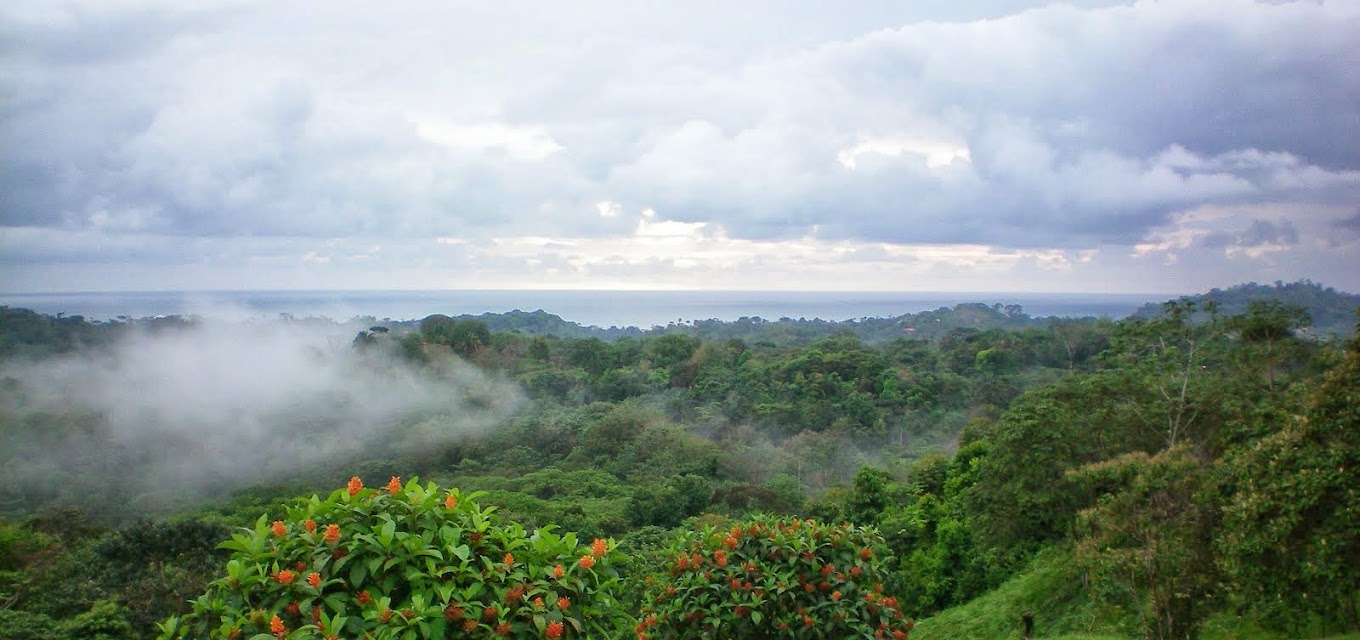

When
I saw my first toucan in Ojochal, happily perching on a tree by my house, I
kept waiting for it to move, since it looked so cute, I could not believe it
was a real toucan, and then to show me, he started flying.
Costa
Rica is home for six of the 40 species currently living around the world. http://en.wikipedia.org/wiki/Toucan
Toucans live only in the tropics. The keel-billed and the chestnut-mandible are the largest spiciest of toucan in Costa Rica.
Toucans have very few predators in the rainforest, as I mentioned the harpy eagle will actually eat a toucan if it can catch it; other predators are the snake, but more often than not what they eat is the toucan eggs. Toucans are able to hide from predators because they have excellent eyesight that allows them to distinguish friends from enemies.
Toucans eat mostly fruits, nuts, and seeds; however, they eat some insects and small reptiles like lizards, spiders, frogs, snakes, and sometimes they eat the eggs of other little birds that seem to give them a crucial addition of protein to their diet.
I remember one of my friends telling me “you don’t even want to know what toucans eat,” then she said with great disgust, “They eat other bird’s eggs.” I can see why she felt so uneasy about it; even so, if we think about it; it is the natural process of life, part of the food chain. It does not change how much I like them; they are only doing what they supposed to do. Some people say that toucans have such enormous beaks to be able to eat a wide variety of foods.
They
have short feet; each one has four claws, two that go backward, and the other
two forward. That configuration allows
them to have a better grip on the branches, and hold the food without dropping
it. Their short feet help them to move
from one tree to another by jumping with a brief opening of the wings.

Toucans live up to 20 years. They are very vocal some people call them
noisy. They love to congregate in large
groups, perching on the mangrove trees between our house and the beach. It is like being in the front seat at a
concert.
Listen to the Toucan call
Listen to the Toucan call
Toucans have been
around for hundreds and hundreds of years, and they had been considered sacred
by the Incas and revered by the Maya civilization. These two indigenous tribes considered the
Toucan as a mystic symbol and a tribal totem.
In their belief, this bird could teach people to speak up and express
themselves. The Shamans considered the
toucan as the connection between the worlds of the living and the spirits.
It is interesting to see how toucans have been appreciated throughout the centuries for many different reasons. Personally, toucans are part of my everyday life, and even though I see them often, I find them more fascinating.
Every time I see them; I take a photo, or record their call in my cell phone; I feel joyful.
When you visit Costa Rica, make sure you ask the locals, where you can see the toucans in their natural habitat, you will love the experience.



